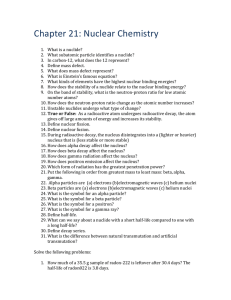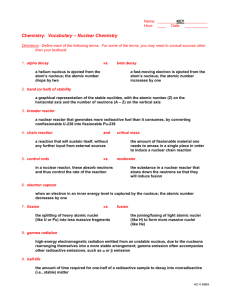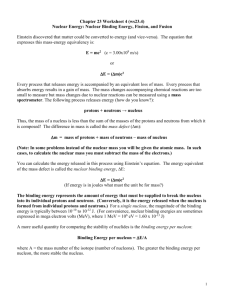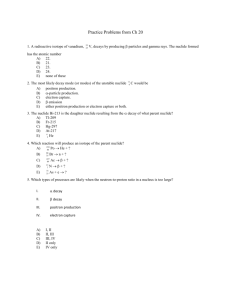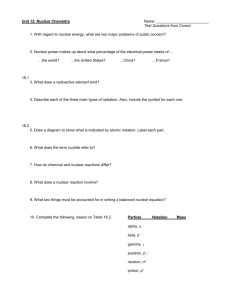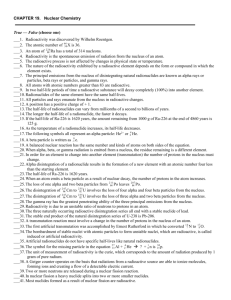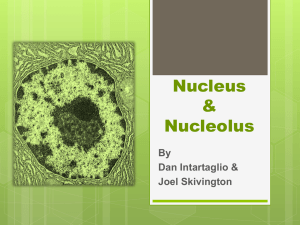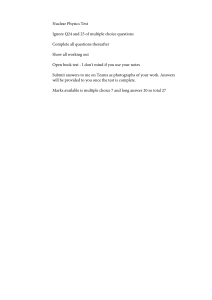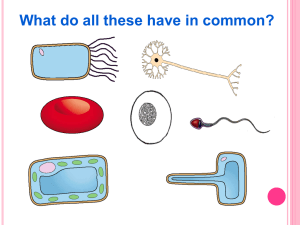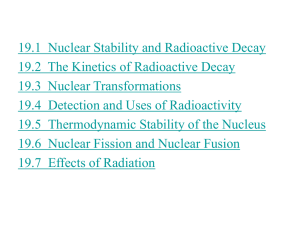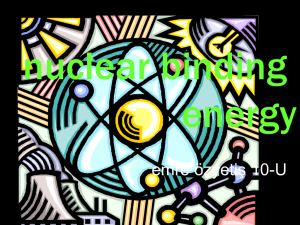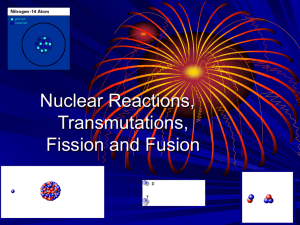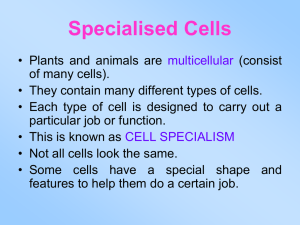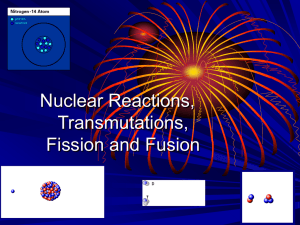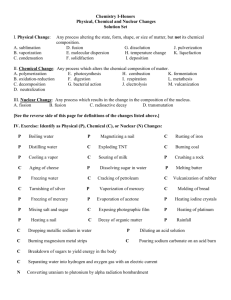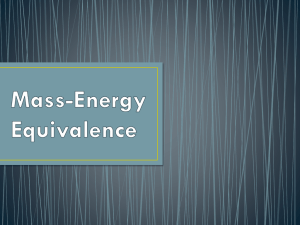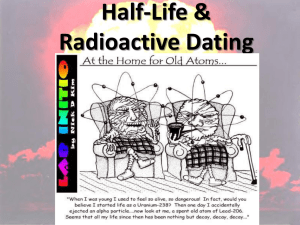Z – N
advertisement
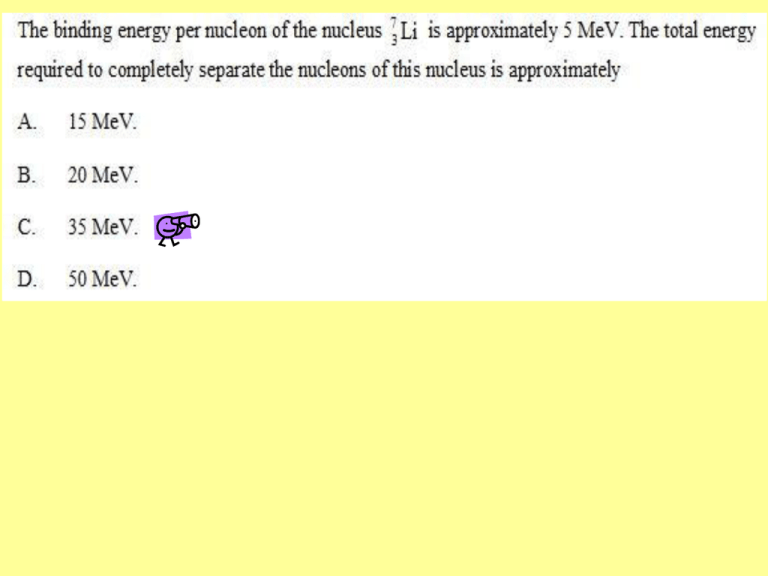
Two samples of radioactive substances X and Y have the same initial activity. The half-life of X is T and the half-life of Y is 3T. After a time of 3T the ratio of the amounts of X to Y is A. B. C. D. 8. 4. 1/4. 1/8. The process by which a heavy nucleus splits into two lighter nuclei is known as A. fission. B. fusion. C. radioactive decay. D. artificial (induced) transmutation. Radium-226 decays with the emission of α-particles to radon (Rn). Complete the nuclear reaction equation. Which of the following provides evidence for the existence of atomic energy levels? A. The absorption line spectra of gases B. The existence of isotopes of elements C. Energy release during fission reactions D. The scattering of α -particles by a thin metal film The mass of a nucleus of rutherfordium-254 is 254.1001 u. Calculate the mass in GeV c–2. 236.7 Nuclide X has a half-life of 1 day and nuclide Y has a half-life of 5 days. In a particular sample, the activities of X and Y are found to be equal. When the activity is tested again after 10 days, the activity will be: A. B. C. D. entirely due to nuclide X. due equally to nuclides X and Y. mostly due to nuclide X. mostly due to nuclide Y. In a fission reaction, the total mass and the total binding energy before the reaction are Mi and Ei respectively, where the binding energy is defined as a positive quantity. After the reaction the total mass is Mf and the total binding energy is Ef. Which of the following correctly compares the total masses and the total binding energies? Total mass A. B. C. D. Mf > Mi Mf > Mi Mf < Mi Mf < Mi Total binding energy Ef < Ei Ef > Ei Ef < Ei Ef > Ei A nucleus of thallium-206 (Tl-206) undergoes radioactive decay to a nucleus of lead-206 (Pb-206). In the reaction equation below, identify the proton number Z of lead and the particle x. Z: 18 or 20; x: neutrino/antineutrino; The Geiger-Marsden alpha particle scattering experiment provides evidence for the existence of A. B. C. D. atomic nuclei. neutrons. protons. nuclear energy levels. The main source of the Sun’s energy is A. B. C. D. chemical reaction. natural radioactivity. nuclear fusion. nuclear fission. The relationship between proton number Z, neutron number N and nucleon number A is A. B. C. D. A = Z – N. Z = A + N. N = A – Z. N = A +Z. A radio-isotope has an activity of 400 Bq and a half-life of 8 days. After 32 days the activity of the sample is A. B. C. D. 200 Bq. 100 Bq. 50 Bq. 25 Bq. Calculate the number x of neutrons produced. 3 2.5 eV Calculate the energy, in eV, of a photon of light of wavelength 490 nm. The binding energy of a nucleus is defined to be the A. energy released when a nucleus is formed from its individual constituents. B. energy released when the nucleus is separated into its individual constituents. C. total energy of the nucleus. D. total energy of the protons inside the nucleus.
